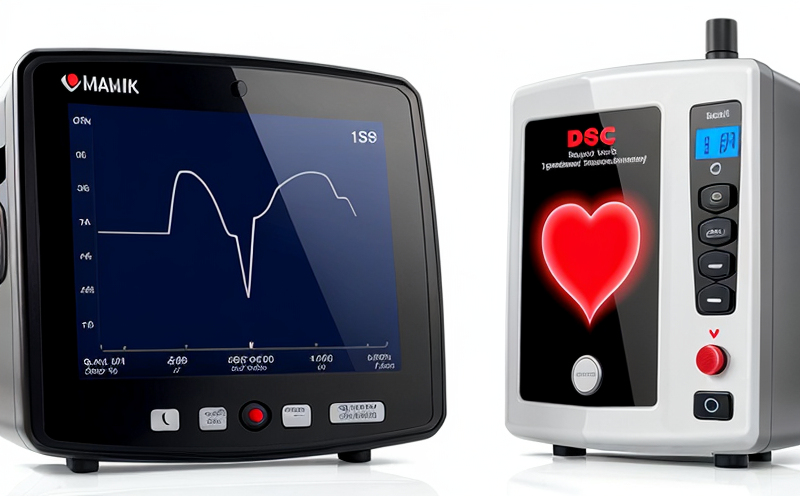ASTM F3160 Guidewire Coating Integrity Testing
The ASTM F3160 standard provides a comprehensive method for evaluating the integrity of coatings on guidewires used in medical devices. This test is crucial as it ensures that the coating remains intact during critical procedures, thereby preventing contamination and ensuring patient safety.
Guidewires are essential tools in cardiovascular interventions such as angioplasty, stent placement, and other catheter-based treatments. They provide a path for delivery of therapeutic agents or medical devices directly to the targeted site within the body. The coating on these guidewires serves multiple purposes including lubrication, biocompatibility, and protection against corrosion.
The ASTM F3160 testing procedure involves several steps designed to simulate real-world conditions encountered during use. Specimens are subjected to various mechanical stresses such as bending, twisting, and stretching under controlled environmental conditions. These tests are aimed at assessing the durability of the coating in maintaining its integrity over time.
| Test Parameters | Description |
|---|---|
| Bending Test | The specimen is bent to a specified angle and held for a defined period. This simulates the flexing action during insertion through blood vessels. |
| Twisting Test | The specimen undergoes twisting cycles to evaluate its resistance to torsional forces encountered when navigating curves in the vasculature. |
| Stretching Test | The coated guidewire is stretched beyond its nominal diameter and then relaxed. This assesses the elasticity of the coating material. |
The ASTM F3160 method also includes visual inspection for any signs of damage or failure on the surface of the guidewire after each test cycle. Additionally, microscopic examination may be conducted to evaluate the integrity and adhesion of the coating at a microscale level.
Accurate testing is vital given that improper coating can lead to complications such as thrombosis, increased risk during procedures, or even device failure leading to patient harm. Compliance with this standard ensures consistent quality across different batches of guidewires, thus enhancing reliability and safety in medical applications.
- This test helps ensure that the coating does not crack or peel off under typical operating conditions.
- It verifies that the coating remains intact even after significant mechanical stress.
- The procedure guarantees consistent performance across different batches of guidewires, contributing to patient safety.
By adhering to ASTM F3160 standards, manufacturers can demonstrate compliance with regulatory requirements and build trust among healthcare providers and patients. This not only enhances product reputation but also supports continuous improvement in design and manufacturing processes.
Why It Matters
The integrity of the coating on guidewires is critical for several reasons:
- Avoiding Contamination: A compromised coating can allow contaminants to enter the bloodstream, leading to infections and other adverse reactions.
- Patient Safety: Ensuring that the coating remains intact prevents issues such as thrombosis or embolism which could result in severe health risks for patients.
- Operational Efficiency: A reliable coating ensures smoother passage through vessels, reducing procedural complications and enhancing overall efficiency of the procedure.
The ASTM F3160 standard is designed to address these concerns by providing a robust framework for evaluating coating integrity. By adhering to this standard, manufacturers can ensure that their products meet stringent quality standards, thereby protecting both patients and healthcare providers.
Quality and Reliability Assurance
The ASTM F3160 test method is part of a broader quality assurance program aimed at ensuring consistent performance and reliability of coated guidewires. This process involves multiple stages, including initial design validation, material selection, manufacturing processes, and final testing.
- Initial Design Validation: Ensures that the intended use and requirements are accurately captured in the design specifications.
- Material Selection: Choosing appropriate materials that meet specified mechanical properties and biocompatibility standards.
- Manufacturing Processes: Implementing precise manufacturing techniques to achieve consistent coating thickness and quality.
The ASTM F3160 test serves as a critical checkpoint in this process, providing objective data on the integrity of the coating. This information is used by R&D engineers and compliance officers to refine design parameters and improve product performance continuously.
Compliance with ASTM F3160 standards also facilitates smoother interactions between manufacturers, regulatory bodies, and healthcare providers. It ensures that all parties are working towards a common goal—patient safety and effective medical intervention.
Use Cases and Application Examples
| Use Case | Description |
|---|---|
| Catheter-Based Procedures | Incorporating ASTM F3160 testing ensures that the guidewires used in angioplasty and stent placement remain intact, facilitating smooth passage through vessels. |
| Drug-Eluting Stents | The coating integrity test is essential for verifying that drug-eluting stents deliver their therapeutic agents effectively without compromising the integrity of the delivery system. |
| Angiography Procedures | Ensuring that coated guidewires do not fail during angiography procedures minimizes risks associated with device failure and enhances patient outcomes. |
- Catheter-Based Procedures: The test confirms that the coating remains intact, facilitating smooth passage through vessels during angioplasty and stent placement.
- Drug-Eluting Stents: Ensures consistent release of therapeutic agents without compromising the integrity of the delivery system.
- Angiography Procedures: Reduces risks associated with device failure, ensuring successful completion of angiography procedures.
The ASTM F3160 test is widely used across various medical sectors where guidewires are employed. Its application in drug-eluting stents and catheter-based procedures exemplifies how this standard contributes to enhancing the reliability and safety of medical devices.





